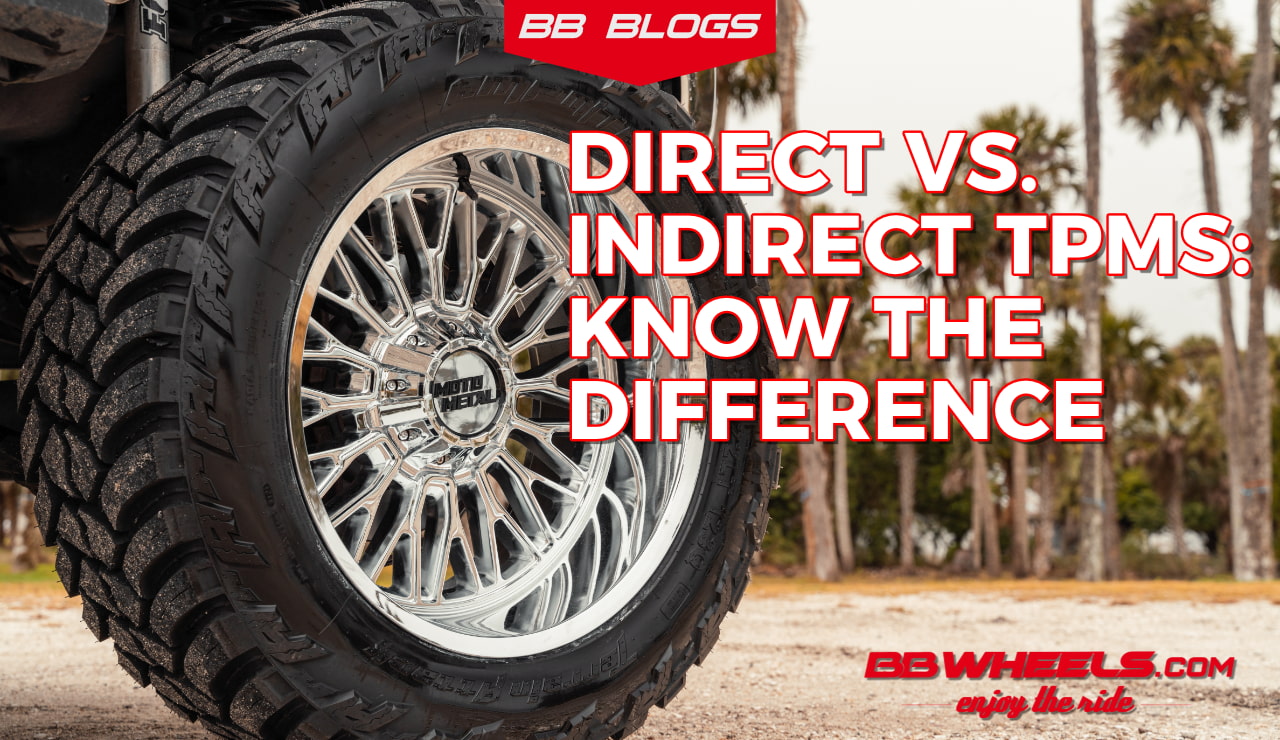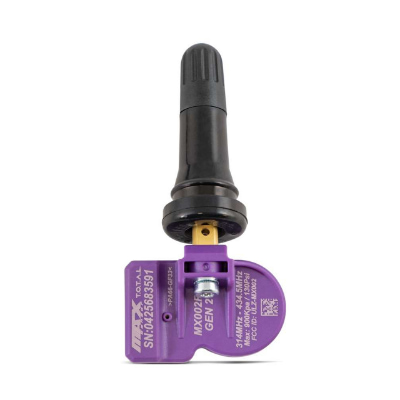Direct vs. Indirect Tire Pressure Monitoring Systems (TPMS): What's the Difference?
Posted by BB Wheels on 31st Oct 2023

Direct vs. Indirect Tire Pressure Monitoring Systems (TPMS): What's the Difference?
At BB Wheels, not only do we offer an incredible range of tires and aftermarket wheels, but we also believe in keeping our customers informed about their vehicles' safety features. One such feature is the Tire Pressure Monitoring System (TPMS). But did you know there are two primary types of TPMS – Direct and Indirect? In today's post, we'll dive into both systems, explaining how they work, their differences, and the vehicles that use the indirect system. Buckle up!
What is TPMS?
First and foremost, TPMS is a system installed in vehicles to monitor tire pressure. Its primary function is to alert the driver when the tire pressure is either too high or too low. Ensuring that your tires are inflated to the correct pressure is not only essential for safety but also improves vehicle efficiency and extends the life of your tires.
Direct TPMS:

How it works:
- Direct TPMS employs pressure sensors located in each tire to provide accurate tire pressure readings to the vehicle's computer.
- These sensors can either be attached to the tire's valve or can be found inside the tire itself.
- They constantly measure the exact pressure inside each tire and relay this information to the car's onboard computer system.
Advantages:
- Precise and real-time tire pressure readings.
- Can indicate which specific tire has a pressure problem.
- Potentially helps in fuel savings since properly inflated tires can improve gas mileage.
Drawbacks:
- Batteries in the sensors may need replacement over time.
- Replacement parts can be more expensive than those for indirect systems.
- Sensors can be damaged during tire replacement if not handled carefully.
Indirect TPMS:
How it works:
- Rather than measuring tire pressure directly, the indirect TPMS works with the vehicle's Antilock Braking System (ABS) wheel speed sensors.
- If a tire's pressure is low, it will roll at a different wheel speed compared to correctly inflated tires. The system detects this discrepancy and triggers an alert.
Advantages:
- No need for additional tire pressure sensors, making it less expensive in terms of parts and service.
- Does not require battery-powered sensors inside the tire, eliminating the need for battery replacement.
- Typically has a simpler design and fewer components, which can mean fewer potential points of failure.
Drawbacks:
- Less accurate than direct TPMS as it does not provide real-time exact pressure readings.
- Cannot specify which tire has an issue. A manual check is needed.
- It might not detect when all four tires are losing pressure at the same rate.
- Indirect systems might not be as responsive as direct systems in rapidly changing conditions.
What vehicles use the Indirect System?
Indirect TPMS is often found in older models, particularly those made before the implementation of mandatory TPMS regulations. However, due to its cost-effectiveness, some newer vehicles with advanced ABS systems might also use this method. It's always a good idea to check your vehicle's manual or consult with your manufacturer to determine which system your vehicle employs.
Wrapping Up
Both Direct and Indirect TPMS systems are pivotal in maintaining road safety. Being informed about the system your vehicle uses not only makes you a more knowledgeable driver but also empowers you to promptly address any tire issues that may arise. Remember, regardless of the system, the key to safety and efficiency is keeping your tires in top-notch condition and at the correct pressure.
In need of new tires or looking to upgrade with stylish aftermarket wheels? Look no further! BB Wheels is your go-to destination. Explore our extensive selection and find the perfect match for your vehicle. Not sure what fits your needs? Our expert team is just a call away. Dial 320-333-2155 for personalized recommendations and exceptional customer service.
Don't compromise on safety or style. Contact BB Wheels today, and keep your journey smooth and secure. Stay safe on the roads and let those wheels keep turning!

